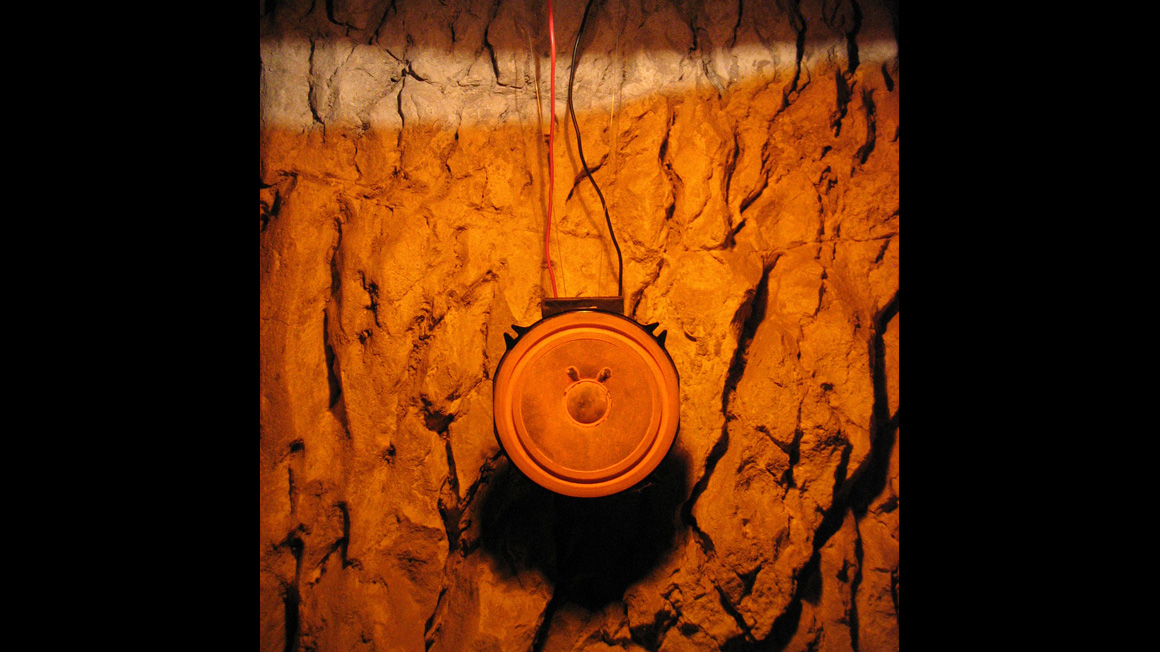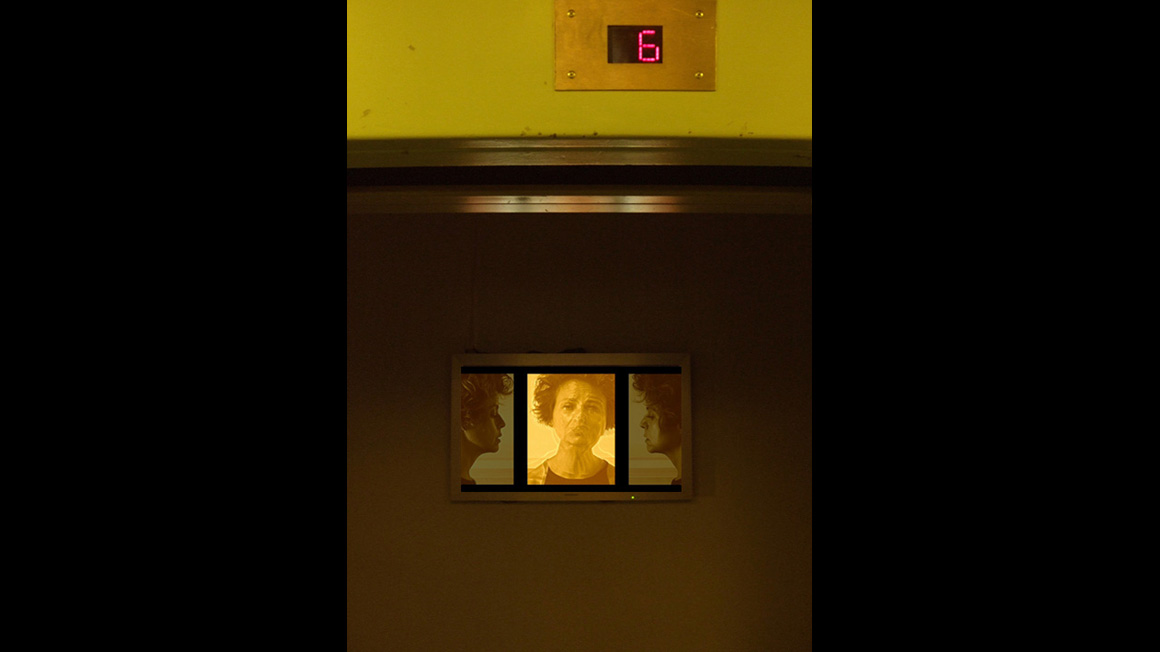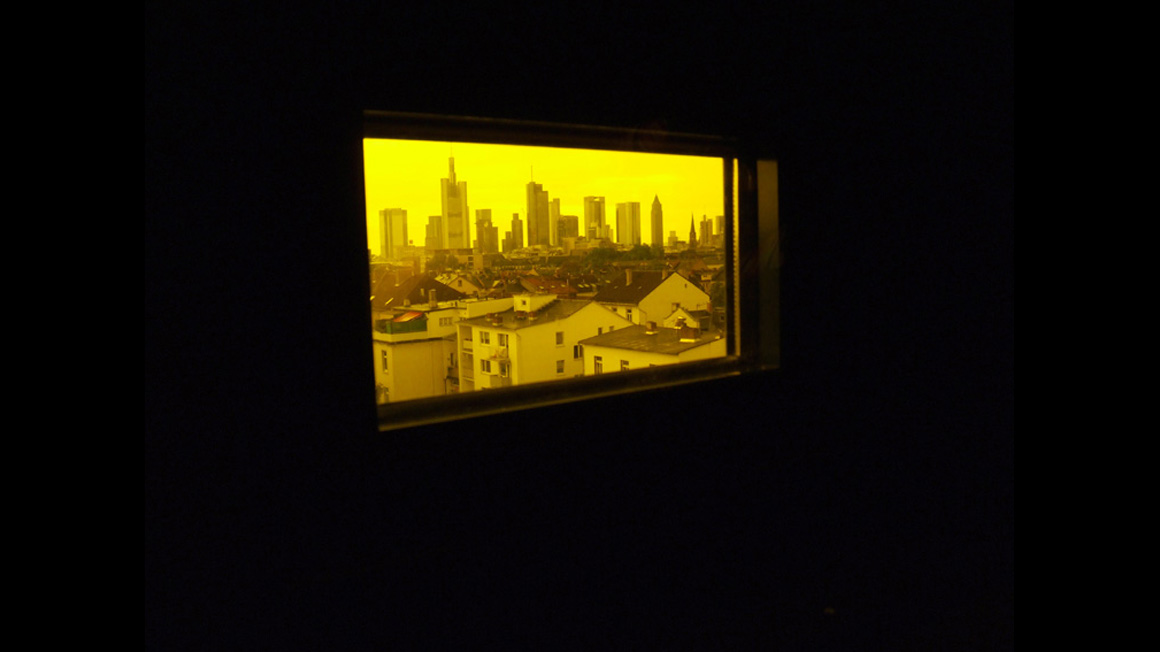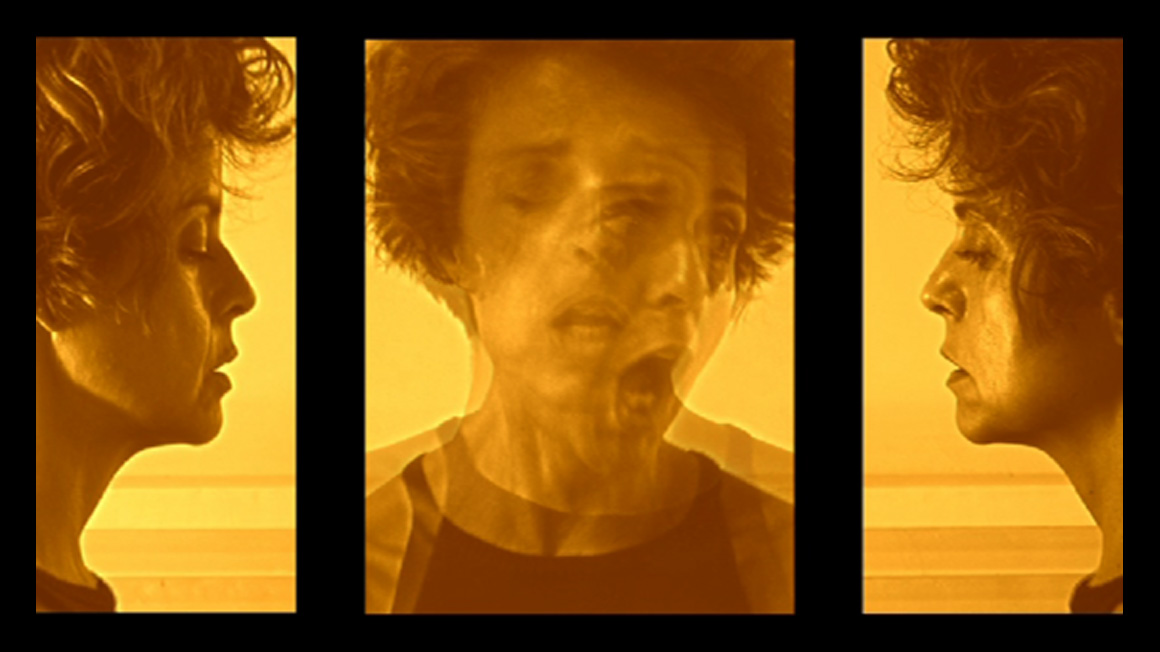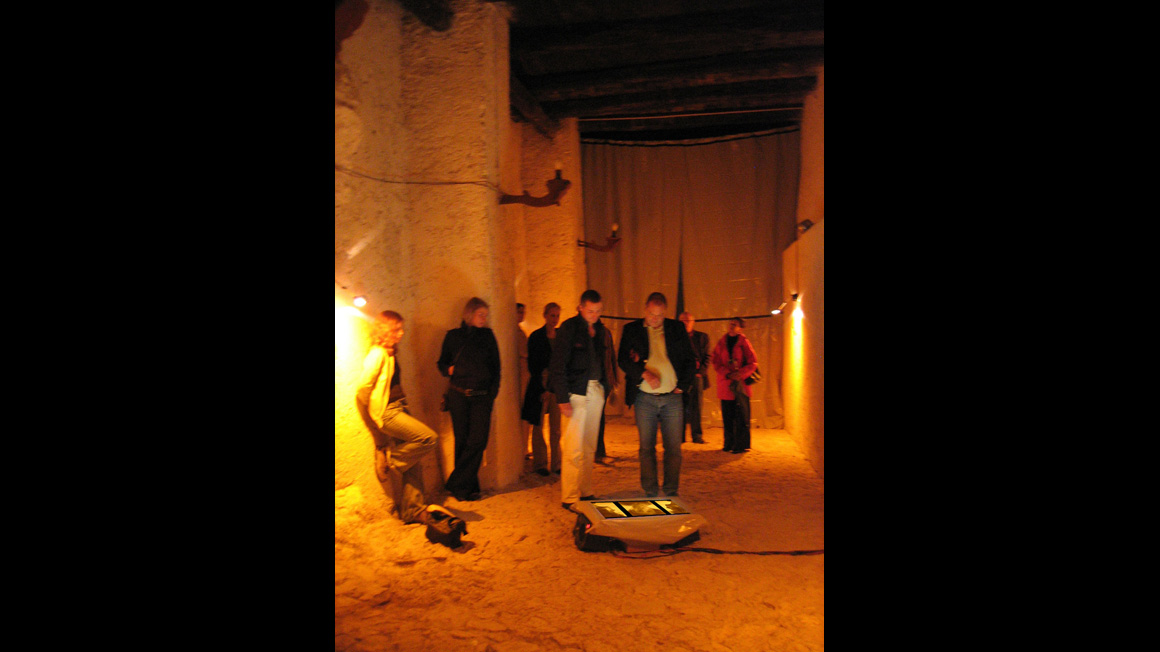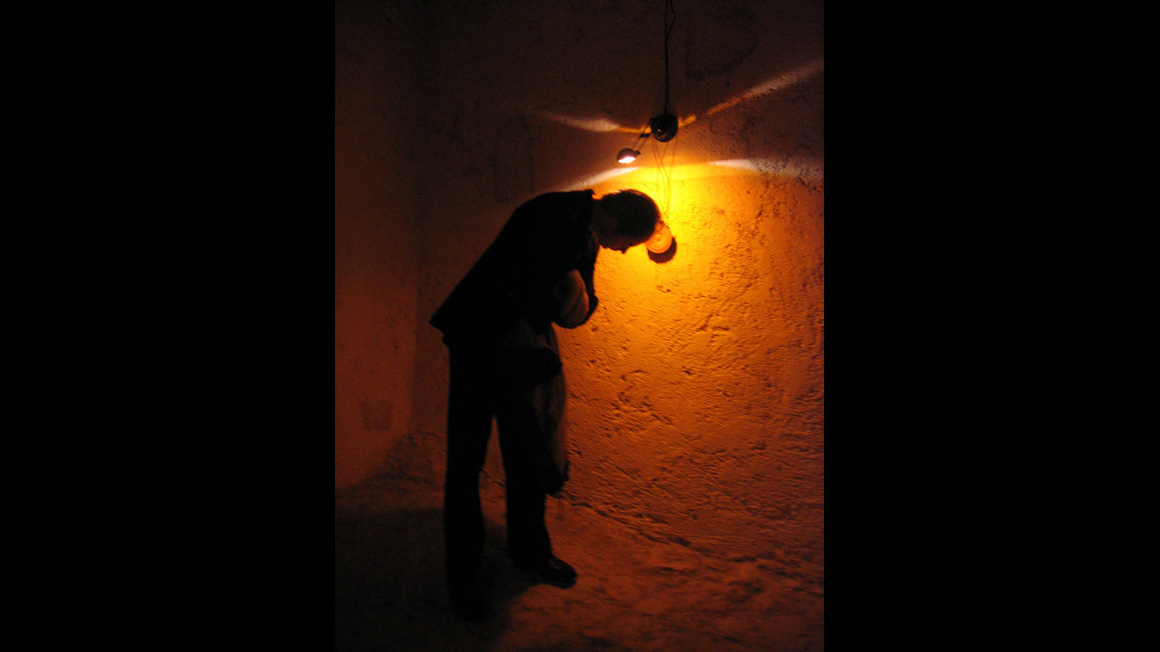The topic of the installation is pathos. Thus a piece for solo voice was composed in an old style, generating pathos. The audiovisual record with the singer and vocal performer Anna Clementi (Rome) was edited so that music can be seen in a new way: first quiet normal as her singing and in a second pass as the history of her singing in video stills, in 'nature mortes'. In contrary to the concert setting singing get another dimension: the singers facial expressions can be seen much closer and after ending the song the loop starts again, so that the viewer can see the difference before - after the process of singing, changing the singers face extremely after 'living' through the song.
In turmlaute.1 the whole space is part of the installation. Its color is yellow-orange, by light, by video and by a small window (with a yellow-orange foil). A video monitor is laying on the floor (in Olevano) or hanging in front of the door of a elevator (mousonturm Frankfurt).
At the video monitor there is shown the head of a woman in three perspectives: in the middle frontal, singing, on the left and right her sides, reading. The singing head makes movements to the sides, up and down - and even the sound is only coming frontal but also from of five directions of the installation space. Five little loudspeakers are hanging at the walls, colored with yellow-orange pigment and lightened by small yellow-orange lamps.
There are two texts used: Dantes story of Ugolino, (L’inferno, 33. chant)) on italien and Kafkas story of the Hunger Artist („Der Hungerkünstler“) in german. Both are about "starving", about an extreme form of controlling and self-controlling, power and powerlessness, in a political context and a context of art.
The composition on Dantes text is made in an old style, an elegy with strong expression of suffering. The singer was filmed while she was singing and her process of singing is shown in the video (10min.). After that this process is repeated in 33 dumb stills with slow, distorting transitions (6 min.). All pictures are doubled, so that the movements of the singing and reading heads are visible in a time-shift.
The singing voice is live doubled by a computer. So every loop is a variation. During the singing of the cruel story of Dante the text by Kafka is read by the heads on the left and right side with multiplied voices. These voices are filtered in five diffeent ways and can dissapear slowly so that the listeners have to come very close with their ears to the little speakers at the walls. In this sound out of the walls is mixed some noise of mpg3-compression in a very low quality.


